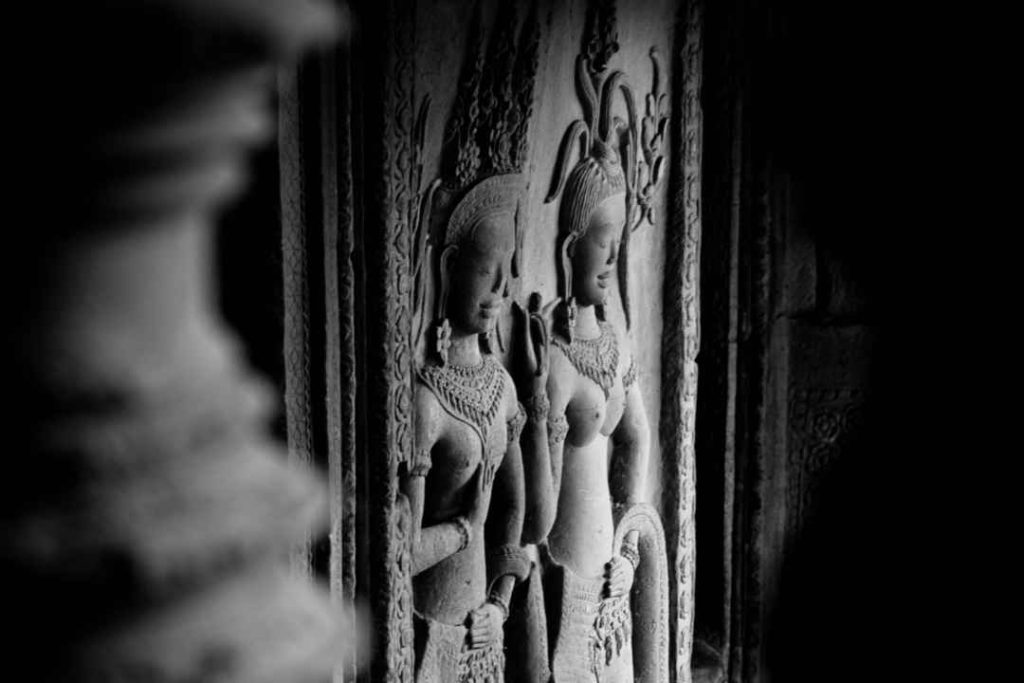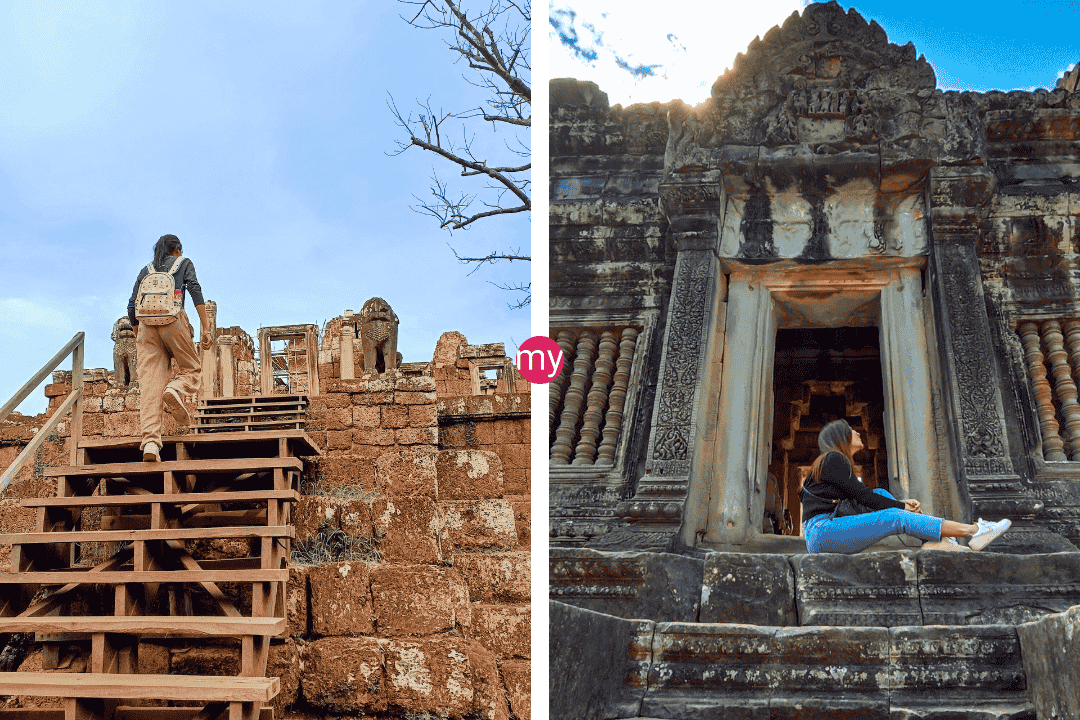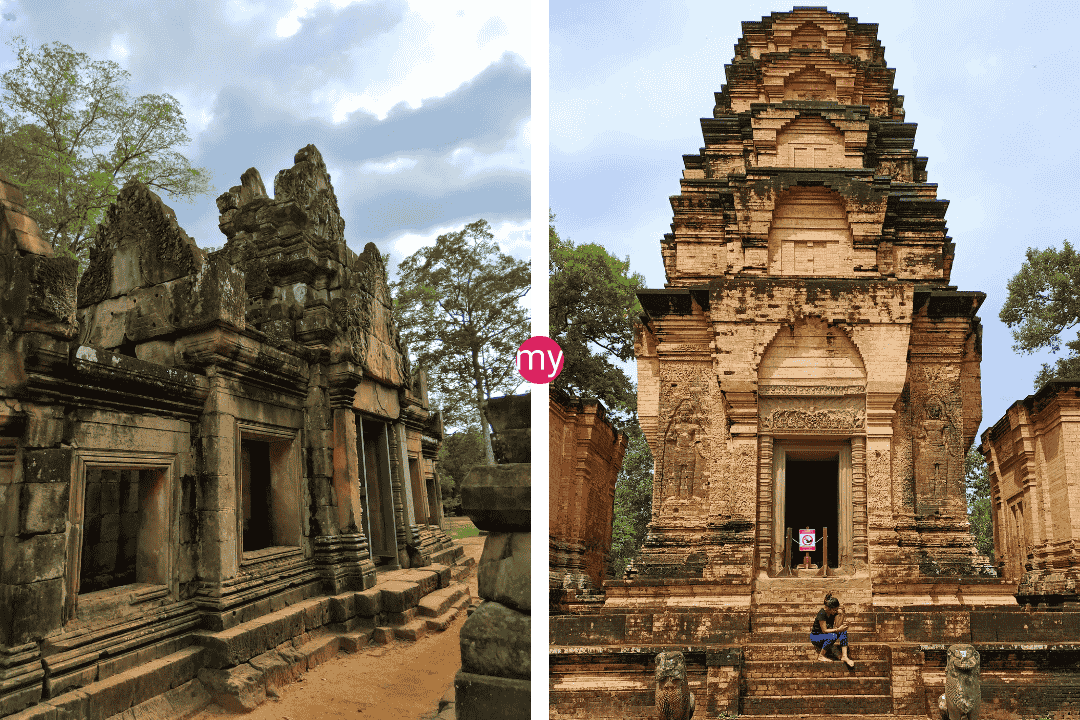Unraveling the Mysteries of Angkor Wat Carvings: A Must-See Experience!
Angkor Wat Carvings: A Timeless Artistry
Picture this: you’re wandering through a magnificent temple complex, surrounded by intricate carvings that have stood the test of time.
Welcome to Angkor Wat, the world’s largest religious monument in Siem Reap, Cambodia.
The Angkor Wat carvings found here are a true testament to the skill and craftsmanship of the ancient Khmer civilization. But hey, don’t just take our word for it, book a tour with MySiemReaptours.com and experience the magic yourself!
The Story Behind the Carvings
The Angkor Wat temple complex was built in the 12th century by the Khmer King Suryavarman II. It was originally dedicated to the Hindu god Vishnu but later transitioned to Buddhism. The carvings found in Angkor Wat depict various scenes from Hindu mythology, as well as the lives of the Khmer people.
Let us guide you through some of the most mesmerizing carvings you’ll come across on your journey:
| Carving | Description |
|---|---|
| The Churning of the Ocean of Milk | An intricate bas-relief depicting a scene from Hindu mythology, where gods (Devas) and demons (Asuras) work together to churn the ocean to produce the nectar of immortality, Amrita. |
| Battle of Kurukshetra | A scene from the Indian epic Mahabharata, showing a fierce battle between two groups of royal cousins – the Pandavas and the Kauravas. |
| Apsaras and Devatas | Countless carvings of celestial nymphs called Apsaras and female deities known as Devatas, believed to serve and entertain the gods. |

A brief History of the Temple
Well, well, well, it looks like we’ve got some history buffs in the house. And today, we’re talking about one of the most iconic temples on the planet – Angkor Wat. If you’re a fan of breathtaking architecture and jaw-dropping historical artifacts, then you’re in for a treat.
First things first, let’s talk about who this temple is dedicated to. Angkor Wat was built in dedication to the Hindu god Vishnu – one of the three principal gods in the Hindu pantheon. Now, you might be wondering who the other two are, so let me enlighten you. They are Shiva and Brahma. Among the three, Vishnu is known as the “Protector.”
The man behind the temple’s construction was King Suryavarman II. And if you’re wondering what his name means, it translates to “protector of the sun.” Coincidence? I think not. Many scholars believe that Angkor Wat wasn’t just a temple dedicated to Vishnu. They think it was also intended to serve as the king’s mausoleum in death. Talk about thinking ahead!
So, when did construction start? It likely began in the year 1116 C.E. – three years after King Suryavarman II came to the throne. The construction ended in 1150, shortly after the king’s death. We know this from inscriptions, architectural design, and the artistic style of the temple and its associated sculptures.
But why did Khmer kings build temples in the first place? Well, it was a means of legitimizing their claim to political office and to lay claim to the protection and powers of the gods. Hindu temples aren’t a place for religious congregation – they’re homes of the god. And for a king to lay claim to his political office, he had to prove that the gods didn’t support his predecessors or his enemies. So, the king had to build the grandest temple/palace for the gods. One that proved to be more lavish than any previous temples.
In doing so, the king could make visible his ability to harness the energy and resources to construct the temple. He could also assert that his temple was the only place that a god would consider residing in on earth. Talk about a power move!
The construction of Angkor Wat is likely to have necessitated some 300,000 workers. That included architects, construction workers, masons, sculptors, and the servants who fed these workers. It took over 30 years to build the site and was never completely finished. That’s right, it’s an unfinished masterpiece.
But here’s the kicker – the site is built entirely out of stone. That’s incredible! Close examination of the temple demonstrates that almost every surface is treated and carved with narrative or decorative details.
And now, just for you, I’ve whipped up a compelling table of the historical context surrounding Angkor Wat. Check it out below:
| Year | Event |
|---|---|
| 1113 | King Suryavarman II comes to the throne |
| 1116 | Likely start of Angkor Wat construction |
| 1150 | End of Angkor Wat construction |
| 1181 | Angkor Wat becomes a Buddhist temple |
| 1431 | Siamese invasion of Angkor |
| 1860 | French explorer rediscovers Angkor Wat |
So, there you have it, folks. Angkor Wat – an architectural and historical marvel that continues to awe and inspire.
Witness the Carvings in Action
While admiring the carvings is a captivating experience, imagine witnessing them come to life in a traditional dance performance! So when you book your tour with MySiemReaptours.com, don’t miss the chance to see the mesmerizing Apsara dance inspired by the celestial nymphs depicted in the temple carvings.
Conservation and Preservation Efforts
The Angkor Wat carvings have survived centuries of wear and tear, natural disasters, and human intervention.
However, efforts are underway to preserve and restore these remarkable works of art.
When you book a tour, you’ll also be contributing to the ongoing conservation efforts. So, kudos to you for being a responsible traveler!
Key Takeaways
- Angkor Wat, the world’s largest religious monument, is home to mesmerizing carvings depicting Hindu mythology scenes and the Khmer people’s lives.
- Some of the most famous carvings include the Churning of the Ocean of Milk, the Battle of Kurukshetra, and the captivating Apsaras and Devatas.
- Witnessing the carvings come to life through traditional Apsara dance performances is an unforgettable experience.
- Booking a tour with MySiemReaptours.com allows you to explore the wonders of Angkor Wat and contributes to the conservation and preservation efforts of this awe-inspiring monument.
Final Thoughts
The Angkor Wat carvings are a treasure trove of history, culture, and artistic mastery.
With their intricate details and storytelling, these stone masterpieces will leave you spellbound.
Don’t just read about it – experience it for yourself with a privat geuided tour of Angkor and create memories that will last a lifetime.
So, pack your bags and embark on an enchanting journey through the magical world of Angkor Wat. And who knows, maybe you’ll uncover some mysteries that are yet to be unraveled!
More curiosities?
Angkor Wat as a Mandala
This means that the temple should be planned according to the rising sun and moon, in addition to symbolizing the repeated time sequences of the days, months, and years. This information may be found in the ancient books of Sanskrit and Khmer.
The main axes of these temples should also be lined up with the planets. This would connect the building to the universe and make temples centers of religion, politics, cosmology, astronomy, and geophysics.
In other words, their purpose is to show small versions of the universe, and they are made in the shape of mandalas, which are blueprints of the universe.
Angkor Wat Today
Even though most Cambodians have become Buddhist in the past few decades, Angkor Wat still has a lot of meaning for the country.
Buddhists have been using the temple as a place of worship since the 15th century, and visitors to the site today will find, among the hundreds of visitors, Buddhist monks and nuns who worship at the location.
In recent years, Angkor Wat has also become as a significant national symbol for Cambodia. Angkor Wat’s outline can be seen on today’s version of the Cambodian flag, which bears the country’s name.
Featured
Recent Articles
Are the stairs at the Angkor temples difficult to climb? Here’s What Most Tourists Regret Not Knowing!
What Temples Are in the Angkor Small Circuit and the Angkor Grand Circuit?
Explore more on My Siem Reap Tours
Koh Ker and Beng Mealea guided tour | Banteay Srei temple tour semi-private guided tour | Angkor Wat Sunrise shared tour | Koh Ker and Beng Mealea guided tour | Morning Siem Reap floating village tour | Afternoon Siem Reap floating village tour | Private Angkor Wat special tour | Kulen Waterfall small group guided Tour | Private Angkor Wat mix temples photo tour

